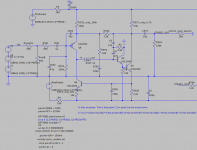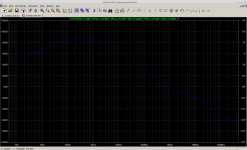It's time to play "transistor golf." Here's a simple preamp using four bipolars. It simulates better than -100db distortion floor in the worst case (20kHz large signal) and less at more typical conditions.
This is a mod of a Sanyo JCX-2600K preamp on the factory PCB, and four transistors is all it had room for. (From the factory, the circuit has only 2 bipolars and simulates to around a -80db distortion floor -- which is no better at mid-band than at 20kHz.)
If there were budget for a 5th transistor, it would be nice to cascode the input transistor to defeat any early effect and nonlinear Cob. Those effects show up since source impedance is high (100k volume pot.) Regardless, simulation suggests these effects aren't too bad.
Here's the circuit and loopgain plot. Two-pole compensation yields >70db of feedback for most of the audio band, dipping to 60db only in the top octave. There's gobs of stability -- 70 degrees of phase margin and >30db of gain margin.
This is a mod of a Sanyo JCX-2600K preamp on the factory PCB, and four transistors is all it had room for. (From the factory, the circuit has only 2 bipolars and simulates to around a -80db distortion floor -- which is no better at mid-band than at 20kHz.)
If there were budget for a 5th transistor, it would be nice to cascode the input transistor to defeat any early effect and nonlinear Cob. Those effects show up since source impedance is high (100k volume pot.) Regardless, simulation suggests these effects aren't too bad.
Here's the circuit and loopgain plot. Two-pole compensation yields >70db of feedback for most of the audio band, dipping to 60db only in the top octave. There's gobs of stability -- 70 degrees of phase margin and >30db of gain margin.
Attachments
Last edited:
Nice. Note that Cob nonlinearity is not generally modelled accurately enough in SPICE, so resulting distortion will sim too low. I'd be tempted to try and verify real-life performance via measurement; I'd think a Focusrite Scarlett 2i2 gen3 or equivalent with suitable balanced TRS adapter cabling should do the business on the recording side.
Very interesting. I'd love to see some real-world measurements. Would you be willing to post simulation files?
Try to obtain a reference different from ground and in this way a pseudo differential configuration.
In real life this will make a big difference.
In real life this will make a big difference.
We can improve this circuit by another 10dB or so with one connection change:
Instead of returning the TPC resistor R5 to ground, return it to the emitter of VAS buffer Q2.
That bootstraps C4, reducing both the absolute level of current through it and also the distortion products within that current.
This is getting quite good for a 4-transistor pre circuit. The weak point is now clearly the lack of a cascode on the input transistor. PSRR is not high either, this pre depends on a clean supply.
Instead of returning the TPC resistor R5 to ground, return it to the emitter of VAS buffer Q2.
That bootstraps C4, reducing both the absolute level of current through it and also the distortion products within that current.
This is getting quite good for a 4-transistor pre circuit. The weak point is now clearly the lack of a cascode on the input transistor. PSRR is not high either, this pre depends on a clean supply.

